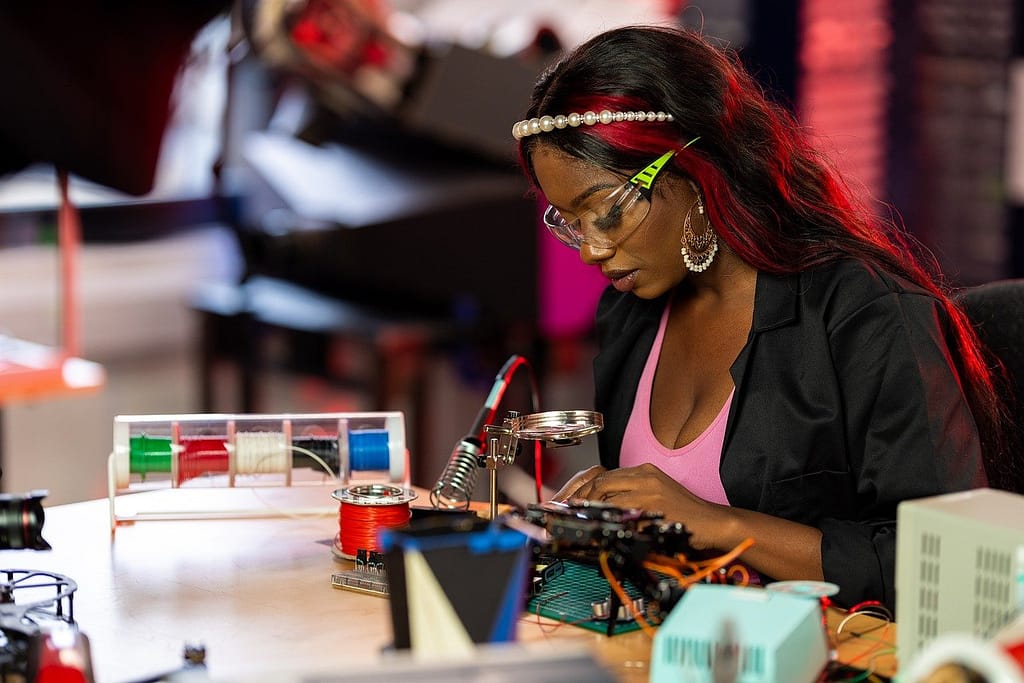The annual battle for Android supremacy continues, and this year, the contenders are the Xiaomi 14 Ultra and the Samsung Galaxy S24 Ultra. Both phones boast top-of-the-line specs, innovative features, and sleek designs. But which one reigns supreme? This in-depth comparison dives into every aspect – from unboxing to performance – to help you decide.

Unboxing Experience
The unboxing experience determines the tone of a phone, and these flagships do not disappoint. Xiaomi goes all-in on a minimalist yet premium box. Inside, you’ll find the phone in a protective sleeve, a 120W fast charger, a USB-C cable, and a nice surprise: a pre-installed screen protector. This saves you the trouble of purchasing and installing one yourself. Samsung takes a more traditional approach, offering a basic case, charger, cable, and user guides. While functional, it lacks the “wow” factor that Xiaomi provides.
Design: A Tale of Two Aesthetics
The design philosophy of these phones varies significantly. Xiaomi favors a bold, almost futuristic aesthetic. The large, symmetrical rear camera module dominates the back and houses an impressive collection of lenses. While visually appealing, it makes the phone feel a little top-heavy. The display has unique, curved edges that spill over the sides, resulting in a nearly bezel-free experience.
Samsung prioritizes ergonomics in its more balanced design. The camera module, while still visible, blends more seamlessly into the background. The phone is pleasant to hold, with a reassuring heft without being bulky. Samsung sticks with its tried-and-true flat display, which some may find less visually appealing but provides more practical benefits when using a stylus or a screen protector.
Display: A Battle of Brightness and Curves
Both phones feature stunning AMOLED displays that push the boundaries of resolution and refresh rates. Xiaomi wins the display innovation crown for its curved edges that create a waterfall effect. This is a personal preference, but it unquestionably adds an air of elegance. Samsung counters with a class-leading peak brightness, ensuring excellent outdoor visibility. Furthermore, its anti-reflective coating reduces distracting glare, making it ideal for viewing content under a variety of lighting conditions.
Software: Stock vs. Customized
Software is another important differentiator. Xiaomi’s MIUI 14 has been updated to Hyper OS, a lighter and more streamlined user interface. It provides extensive customization options, allowing users to tailor the look and feel to their liking. However, some users may find the notification system cluttered, with occasional advertisements appearing.
Samsung’s One UI 5.0 continues to be polished and refined. While it does not provide the same level of customization as Hyper OS, it is still intuitive and user-friendly. However, one persistent criticism of Samsung’s software is the presence of bloatware and pre-installed apps that users may not need, as well as the occasional intrusive ad.

Performance: Powerhouses on Par
Both phones feature Qualcomm’s latest and greatest processor, the Snapdragon 8 Gen 2. This translates to butter-smooth performance that can handle even the most demanding tasks, such as multitasking and running graphically intensive games. Benchmark scores indicate a similar picture, with both receiving high marks. Real-world usage reveals only minor differences; these phones are absolute performance beasts.
Camera Showdown: Mega-Pixel Mania
The camera battleground is hotly contested. Xiaomi has a quad-lens setup with a massive main sensor measuring 200 megapixels. While megapixel count does not guarantee image quality, it does indicate a focus on capturing detailed images. Samsung counters with a more conservative 108-megapixel main sensor, advanced image processing algorithms, and superior low-light performance. Both phones support a variety of shooting modes, including portrait, telephoto, and ultrawide, to meet a variety of photography needs.
Finally, image quality comes down to personal preference. Xiaomi may appeal to those who value high-resolution detail, whereas Samsung excels in low-light conditions and produces consistent, reliable results.
Battery Life: Stamina for All-Day Use
Both phones have large batteries that exceed 5000 mAh, providing a full day’s use on a single charge with moderate usage. Power users may need to recharge at the end of the day, but neither phone will leave you scrambling for a charger in the middle of the afternoon. Furthermore, both offer fast charging. Xiaomi includes a 120W charger, while Samsung provides a slightly slower but still fast 45W option (sold separately).
The Verdict: A Close Call for Different Users
Declaring a definitive winner is challenging. The Xiaomi 14 Ultra stands out with its innovative curved display, powerful camera system, extensive customization options, and impressive
The Verdict: A Close Call for Different Users
Here’s a breakdown to help you decide which phone aligns best with your needs:
Choose Xiaomi 14 Ultra if:
- You prioritize a visually striking, curved display.
- You crave a powerful camera with a high megapixel count for detailed shots.
- You value extensive customization options for the user interface.
- You appreciate the convenience of a pre-installed screen protector and a super-fast charger in the box.
Choose Samsung Galaxy S24 Ultra if:
- You prefer a more balanced and comfortable design for one-handed use.
- You prioritize excellent outdoor visibility with a bright display and anti-reflective coating.
- You value a clean and user-friendly software experience with minimal bloatware.
- You plan to utilize a stylus for note-taking or artistic creation (S Pen sold separately).
- You’re satisfied with a reliable camera that performs well in low-light conditions.
Additional Considerations
- Price: Both phones fall within the premium flagship price range, typically starting around $1400. However, Xiaomi offers a higher base RAM configuration (16GB) for the same price as Samsung’s 12GB option.
- Brand Loyalty: If you’re a longtime user of either Xiaomi or Samsung, you might be more comfortable sticking with their familiar user interface and ecosystem.
- Software Updates: Samsung has historically provided longer software update support than Xiaomi, which might be a factor if you plan to keep your phone for several years.
The Final Word
The Xiaomi 14 Ultra and Samsung Galaxy S24 Ultra are both excellent Android smartphones, with distinct strengths and target audiences. Consider your priorities – design, display, camera, software, and battery life – to determine which phone best meets your requirements. Whatever you choose, you’ll get a high-quality mobile experience that pushes the limits of Android technology.
Beyond the Specs: A Look at Aftermarket Support and Ecosystem Integration
It’s important to consider factors beyond the core specifications. Aftermarket support plays a crucial role in the longevity of your phone. Samsung typically enjoys a wider range of readily available cases, screen protectors, and accessories compared to Xiaomi. Additionally, Samsung’s ecosystem of devices, such as smartwatches and tablets, might be more appealing if you’re already invested in their products.
The Future of Android Innovation
The rivalry between Xiaomi and Samsung continues to fuel innovation in the Android smartphone market. Each iteration pushes the boundaries of processing power, camera capabilities, and user experience. As a consumer, this constant competition translates to a wider range of exceptional options and a future filled with even more exciting advancements in mobile technology.




